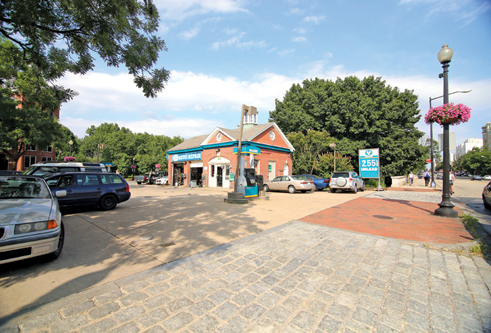Panel Eyes More Minor PUD Change

By Brady HoltCurrent Staff Writer
The planned unit development process is a popular way for developers to receive substantial flexibility from land-use restrictions in exchange for providing public benefits and undergoing detailed design review by the city’s Zoning Commission.
The complications, uncertainty and expense of such a process generally impose a de facto limit on these planned unit developments, or PUDs. Generally, only developers of a large property would be interested. But the Zoning Commission sparked concerns from some community leaders earlier this year when it considered a proposal to allow PUDs on any lot size.
Last month, commissioners granted preliminary approval to a compromise. Existing minimum lot sizes would remain, and the Zoning Commission could continue to waive only 50 percent of that minimum in low-density residential and commercial areas, as under the current regulations. Meanwhile, in denser areas the commission could choose to consider a PUD application on a lot as small as 5,000 square feet instead of today’s 7,500 or more depending on the zone.
The latest version responds to the strongest critics, who worried about drastic changes to residential communities if developers could win permission to evade height and density caps there.
However, various concerns still remain. According to Larry Hargrove of the Committee of 100 on the Federal City, the latest changes are “a very considerable improvement from where things stood before, but they don’t go far enough in certain respects.”
In an interview, Hargrove said his main issue is that smaller lots along major thoroughfares — but abutting low-density residential areas — could be considered for PUDs, as a lower minimum lot size would make it easier for developers to create potentially intrusive projects there. While a PUD application on a 5,000-square-foot lot would first require a waiver from the commission and would then need to win approval on its merits — in both cases with community input — Hargrove expressed concerns about leaving too much power in the hands of zoning commissioners.
“When you bought your property, you didn’t think the future of your neighborhood would be determined by a bunch of public officials using their unfettered personal discretion,” said Hargrove.
The PUD lot-size discussion emerged due to Georgetown developer EastBanc’s effort to construct a small mixed-use building on the site of a gas station at Pennsylvania Avenue and M Street NW, a prominent site across from the Four Seasons Hotel at Georgetown’s eastern gateway. EastBanc’s property, at 7,420 square feet, fell shy of the 7,500 square feet needed for a PUD under current regulations even if the Zoning Commission were to grant its maximum waiver of 50 percent from the standard 15,000.
EastBanc is seeking PUD flexibility to create its building with eight residential units atop a ground-floor restaurant. The project team argues that the project’s architecture and related open-space improvements will be valuable community amenities that offset requests for greater height and density and the elimination of an on-site parking requirement of three spaces.
“In this circumstance, the deviation is quite minimal,” zoning commissioner Peter May said at an Oct. 31 discussion of the project. “The concern that was raised about wiping out minimums entirely was based more broadly on the issue of PUD minimums in residential neighborhoods. … I did not get the impression [that an issue like this] was a major concern.”
However, the commission was deadlocked on whether to grant preliminary approval to the EastBanc project at that meeting, electing to wait instead until they have finalized the broader PUD change. Commissioners expect to vote on both issues on Dec. 12.
This article appears in the Nov. 16 issue of The Georgetown Current newspaper.
